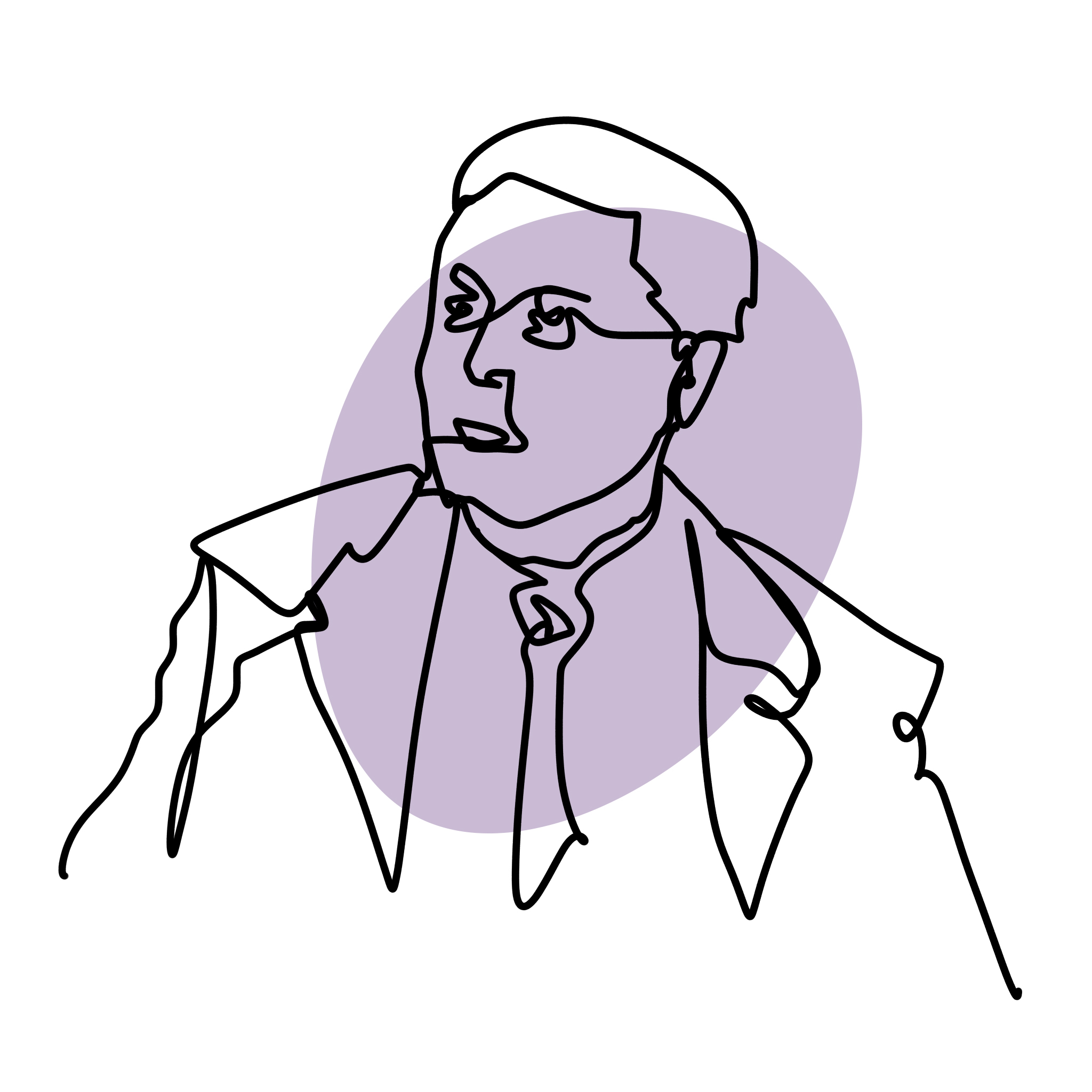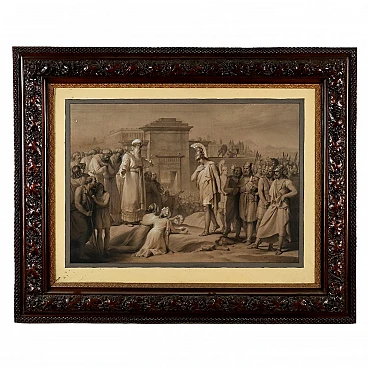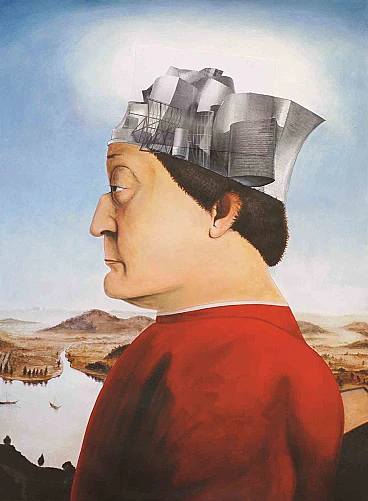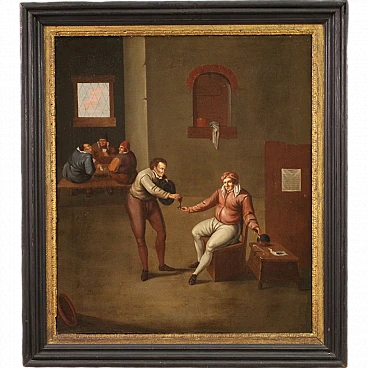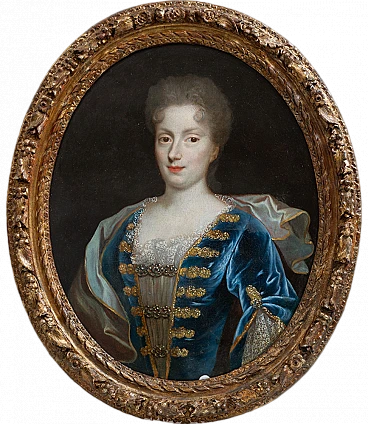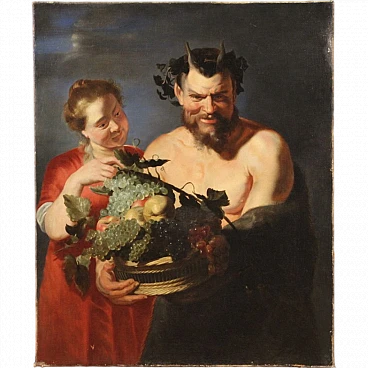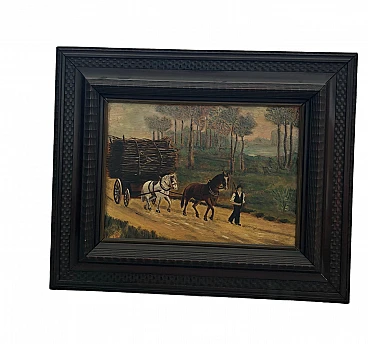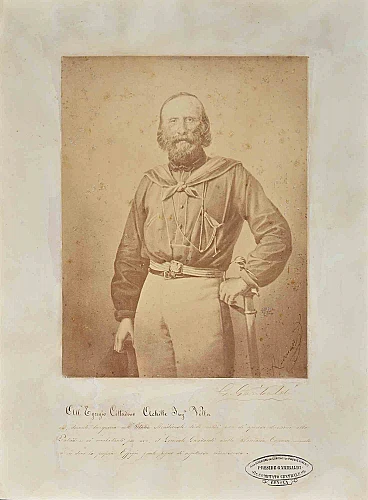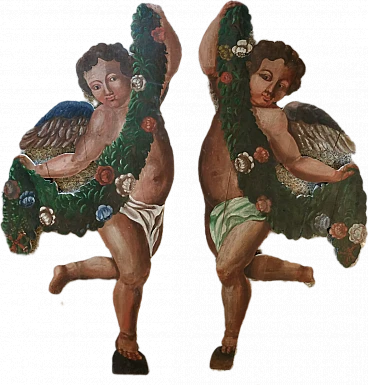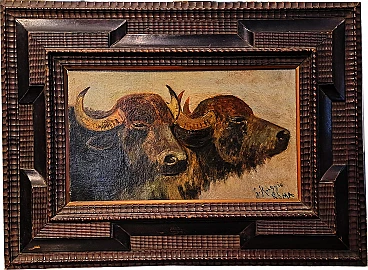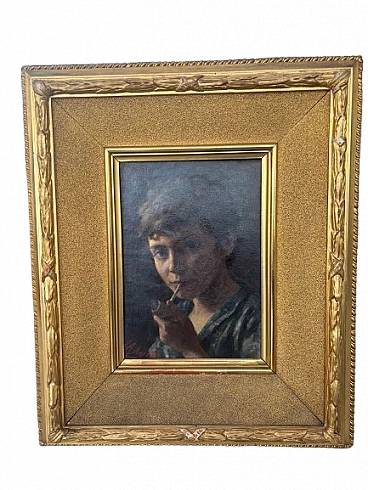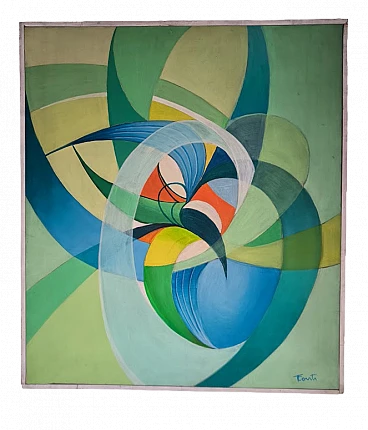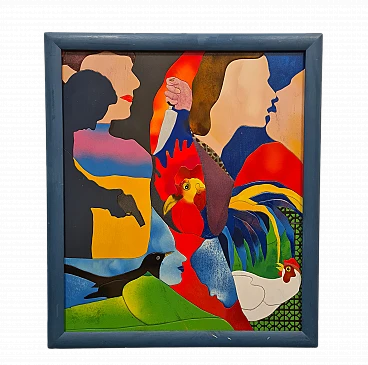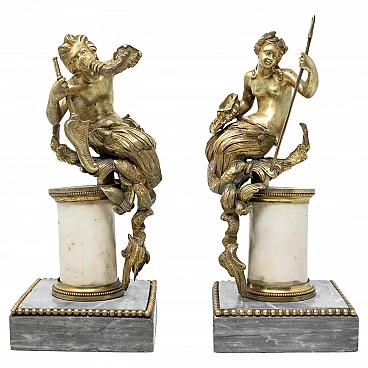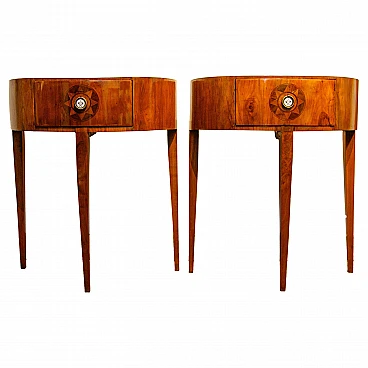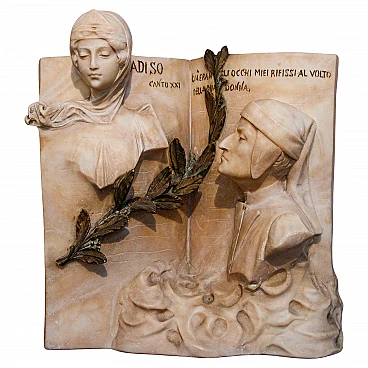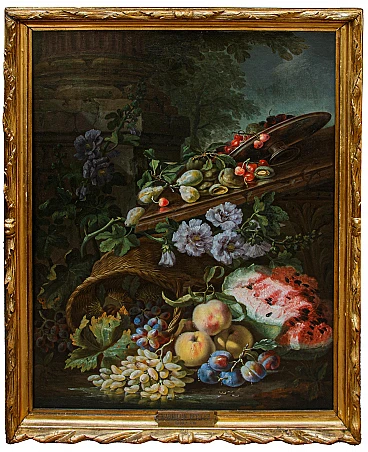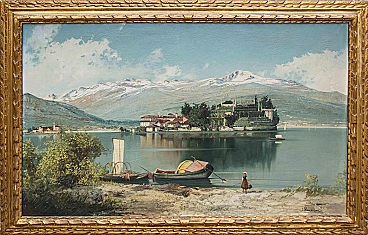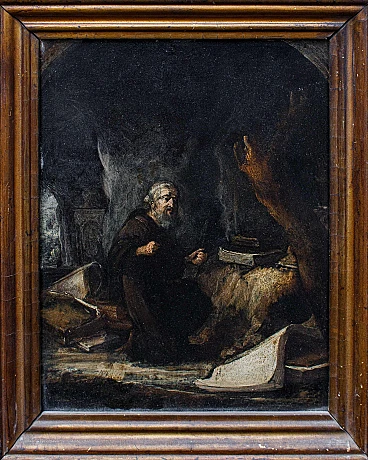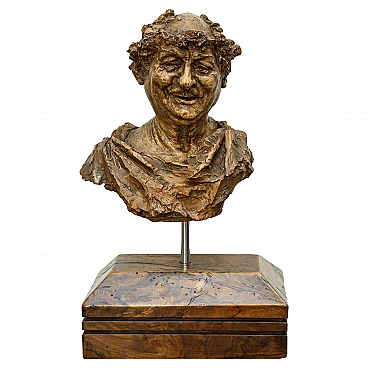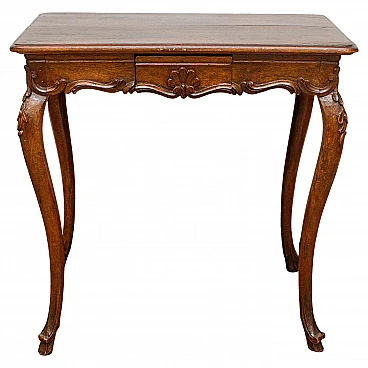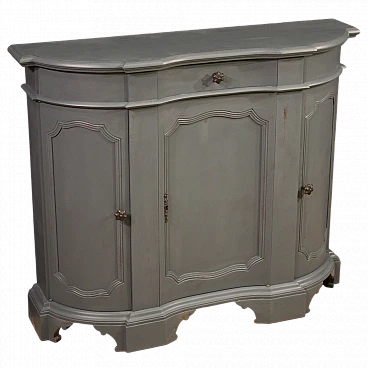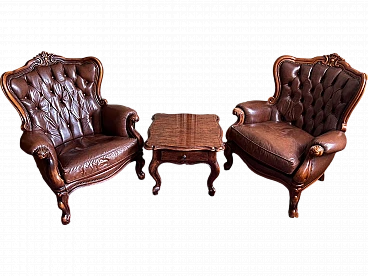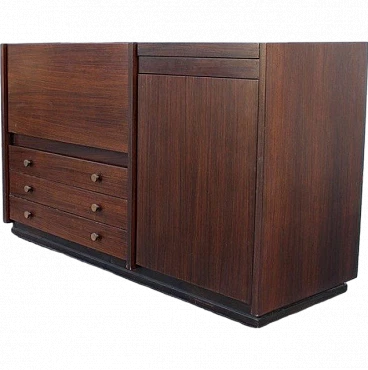Johann Baptist Kreitmayr (1819 Munich -1879 Ebenda), View of the Doge's Palace in Venice, 1848, oil on canvas, 35.4 x 28.5 cm - with frame, 47 x 40 cm. This painting depicts a view of the façade of the Doge's Palace in Venice, the Porta della Carta (the monumental entrance to the palace) that connects the building to St. Mark's Basilica and part of the basilica itself, observed from the Piazzetta that flanks the large St. Mark's Square and overlooks the Venetian lagoon. The German artist of the first half of the 19th century masterfully took up the pictorial genre of Veneto vedutismo, a typically 18th century phenomenon that found in Venice the epicentre of its development. The first Venetian view with a certain date, by Gaspare Vanvitelli, is from 1697 and the first datable ones by Luca Carlevarijs are from 1703, while the death of Francesco Guardi in 1793 and the last days of the Venetian Republic in 1797 mark the end of the production of this genre of painting. There is no shortage of views of Italian cities with earlier dates (such as Gentile Bellini's Procession in St. Mark's Square and Vittore Carpacci's Miracle of the Relic of the Cross at the Rialto Bridge, both datable to around 1500). We can consider the genre of Italian vedutismo a 'creature' of Vanvitelli (1652-1736) who, of Dutch origin (Gaspar van Wittel), trained in the Passi countries and then moved to Rome: from 1680 he produced drawings and paintings of Roman views, travelling to Naples, Florence, Bologna and Venice. Following Vanvitelli's trip to Venice, the artist Luca Carlevarijs (1663-1730) also began to produce views. The 1720s saw a new stage in the development of Venetian Vedutism with the appearance of Giovanni Antonio Canal, known as Canaletto (1697-1768). Whereas the paintings of his predecessor Carlevarijs are highly decorative, rich in colour and basically linear, those of Canaletto, such as St. Mark's Square towards the Basilica (1723, now in the Thyssen-Bornemisza Museum in Madrid) the figures and details of buildings are subordinate to the atmosphere. While Carlevarijs' figures betray their origin from individual sudi, Canaletto seldom resorts to these means: his figures blend with the environment, the sunlight, the cloudiness, the atmospheric representation, the busy characters, everything is conceived according to the effects of light on things. Other great names in the genre are Michele Marieschi (1710-43), whose works are characterised by a rapid and lively brushstroke, Bernardo Bellotto, Canaletto's nephew and one of his most fruitful pupils and, finally, Francesco Guardi (1712-93) who, although he began his career as a figure painter, would later devote himself extensively to this genre, making light and atmosphere the protagonists of his works, thanks to Canaletto's teaching. The vedutistic experience of the Venetians was to be directly continued by 19th century painters such as Giovanni Migliara (1785-1837) or Renato Borsato (1927-2013), to the point of influencing the art of painters of European greatness, of the calibre of John Constable (1776-1837) or Jean-Baptiste Camille Corot (1796-1875).
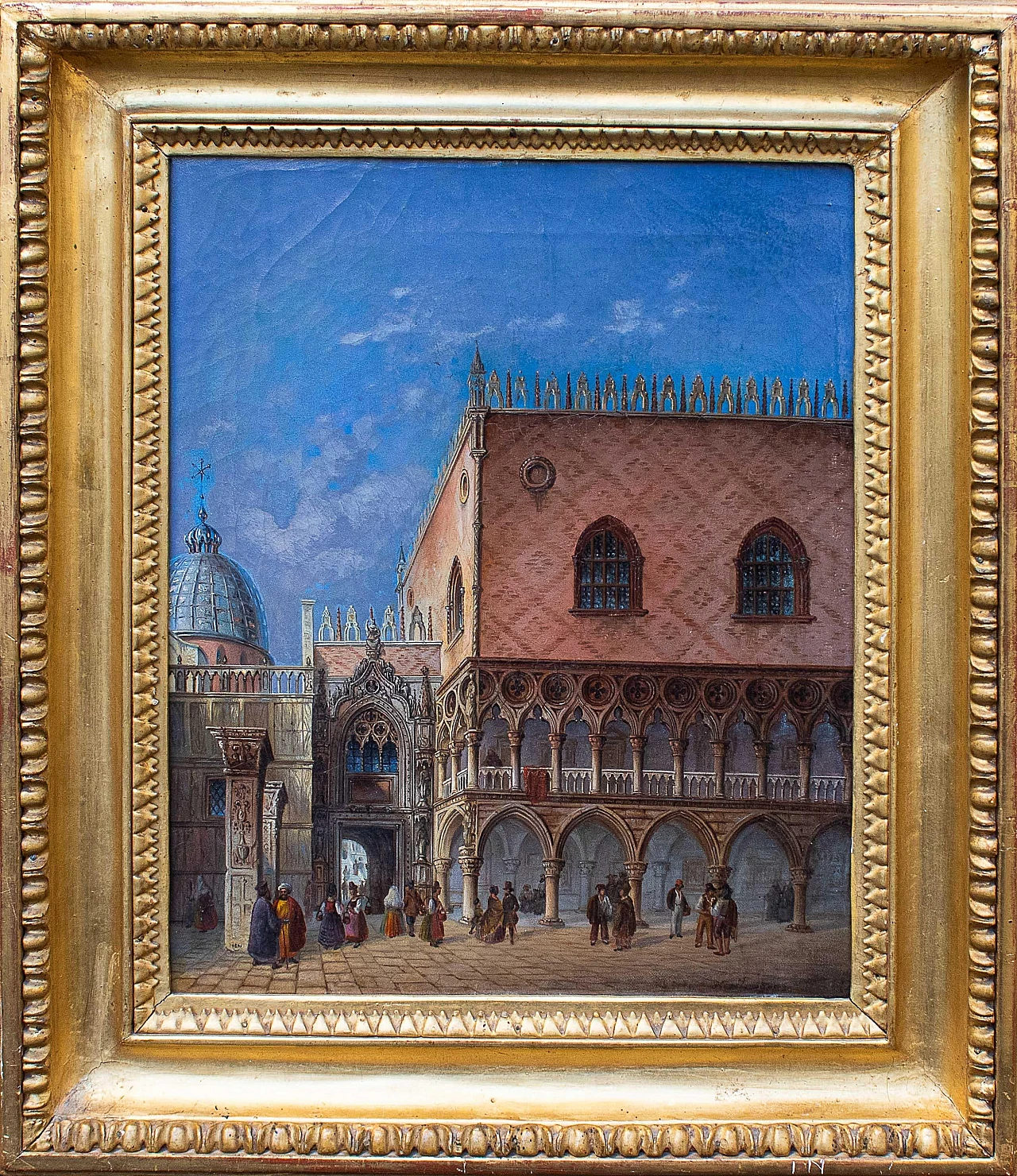
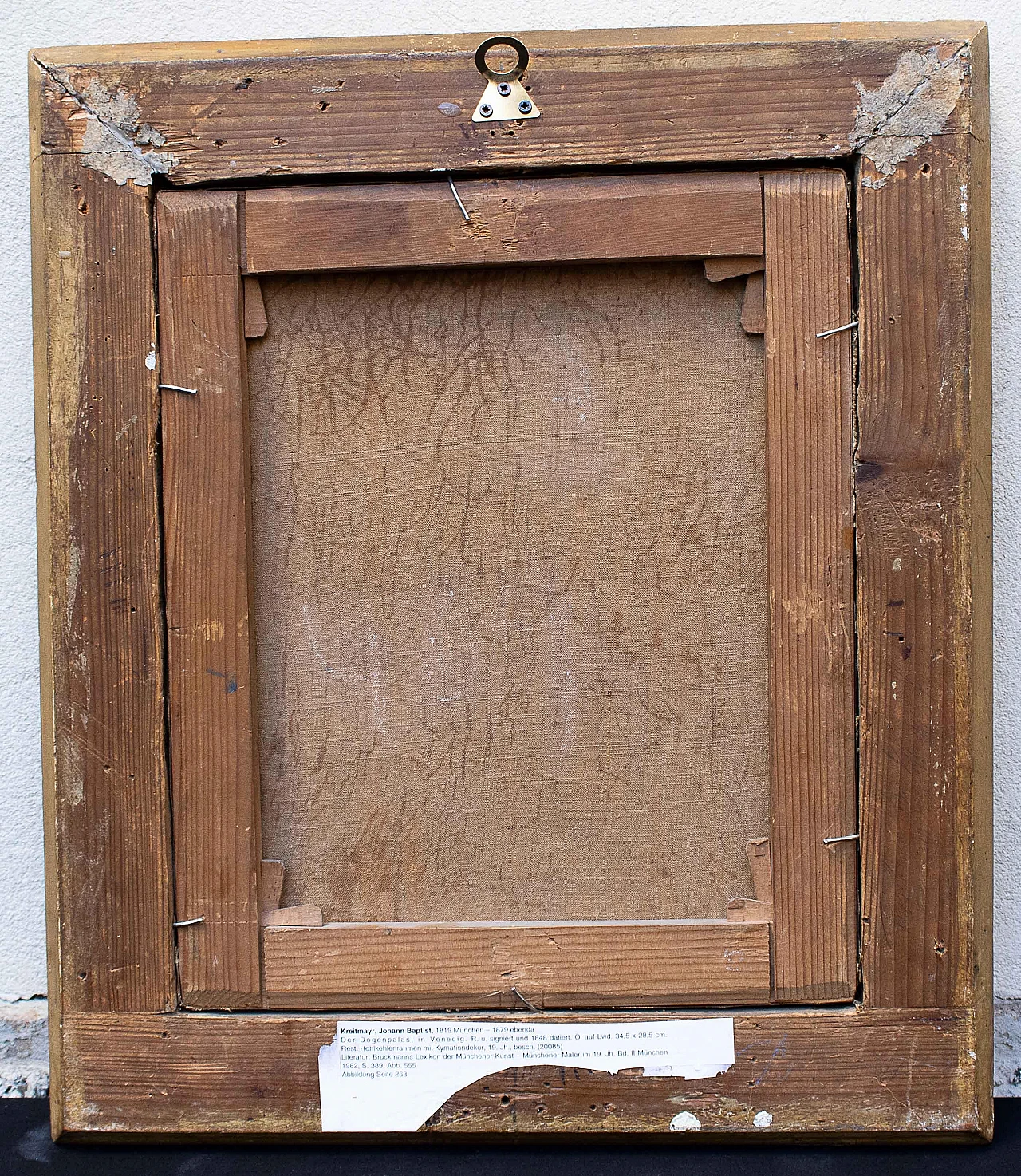
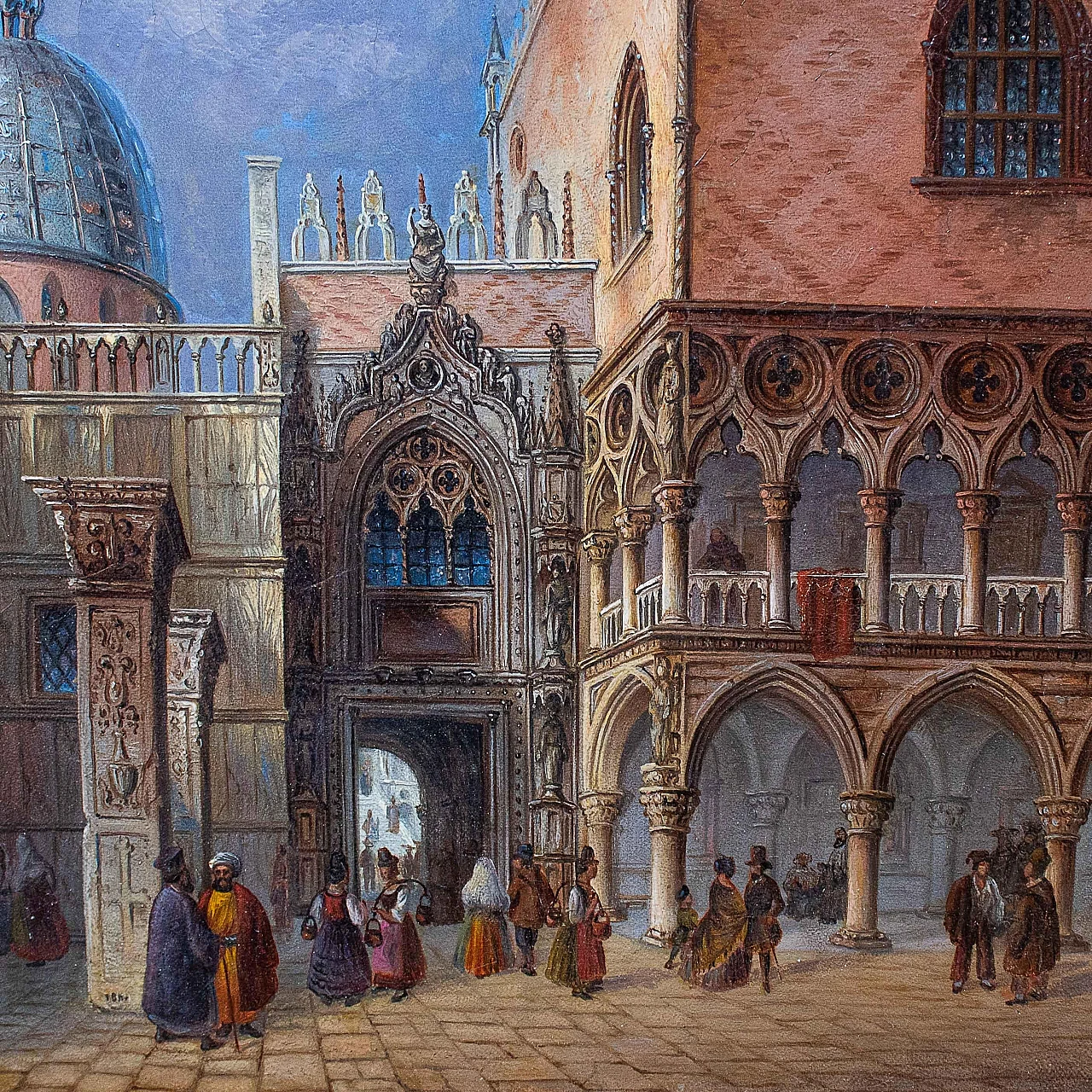
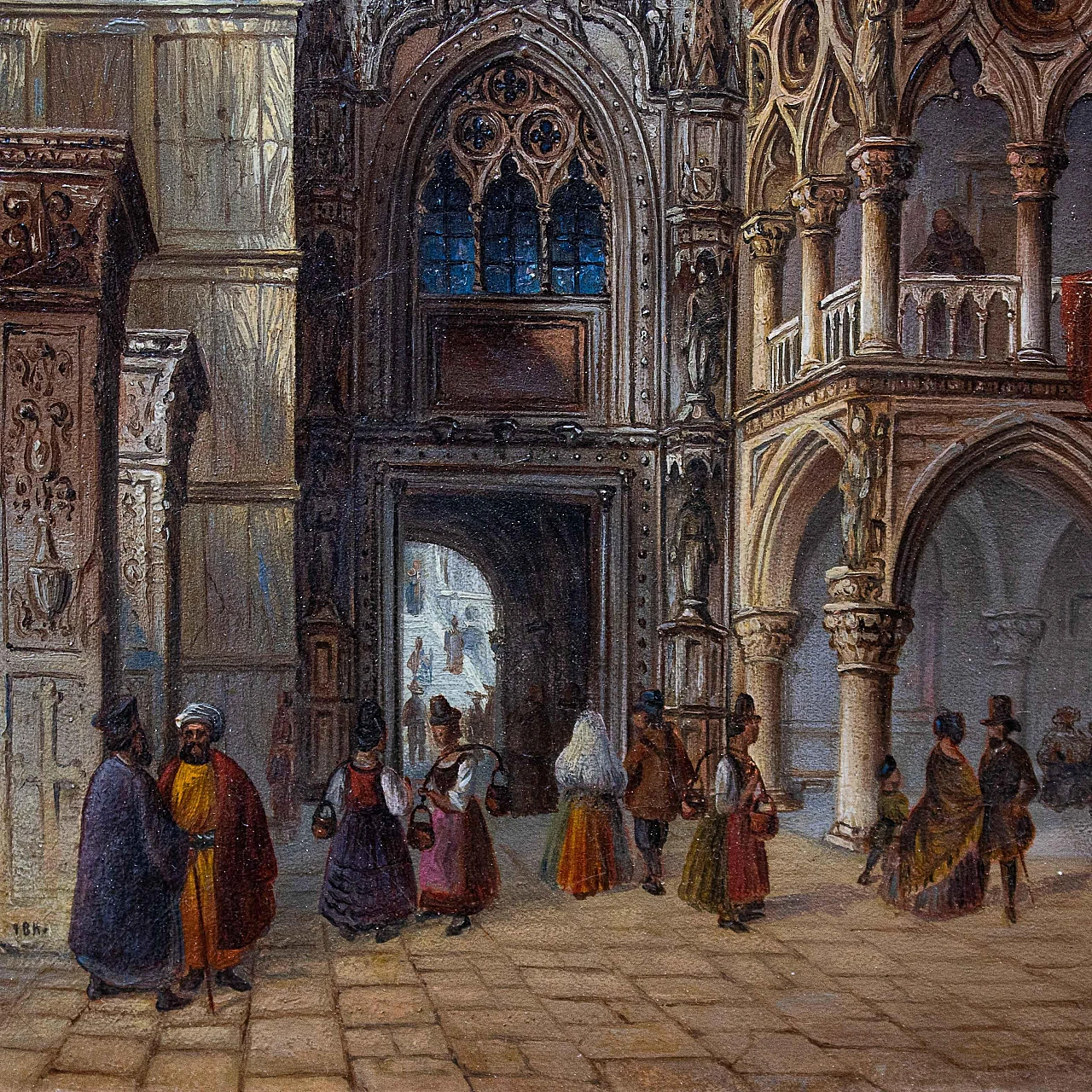
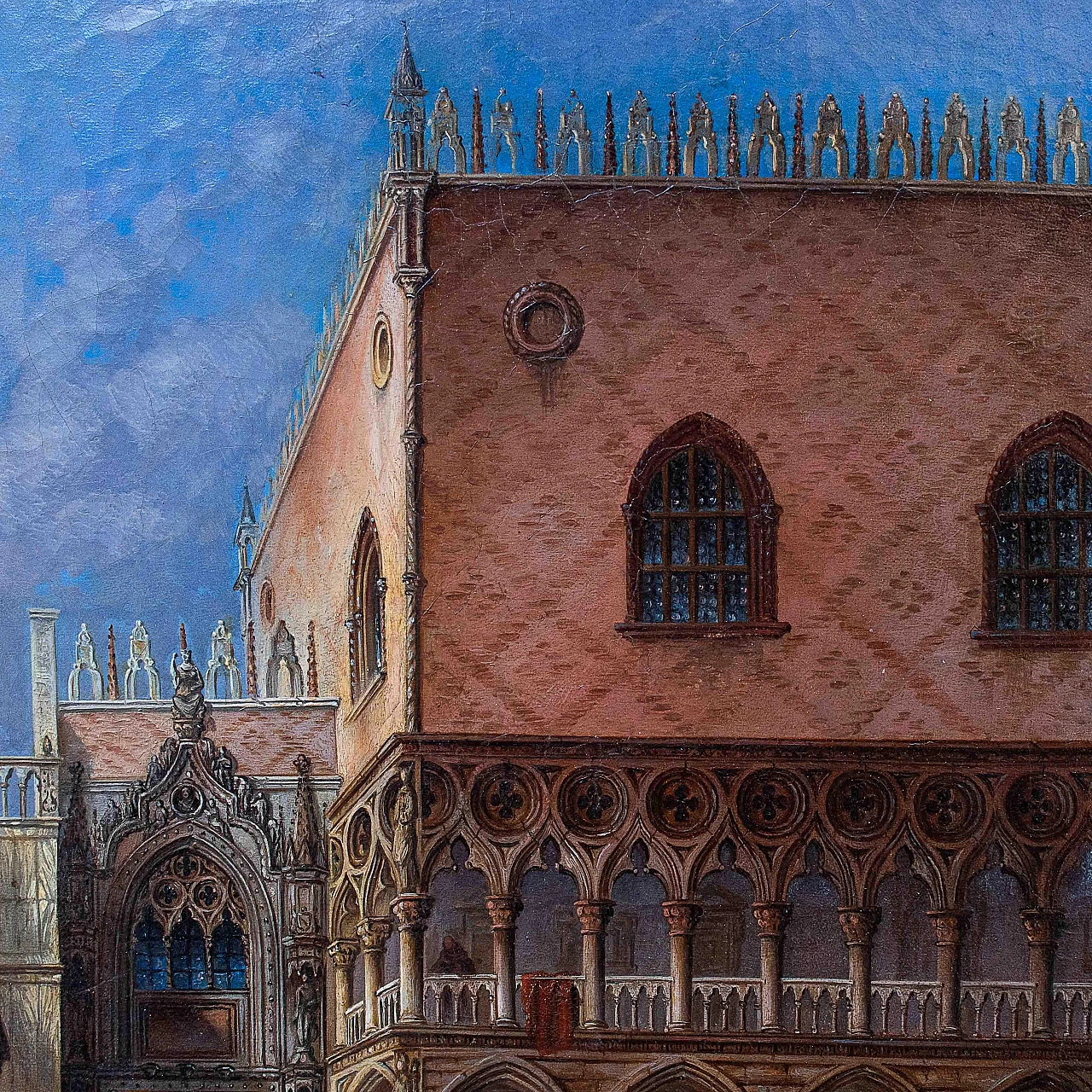
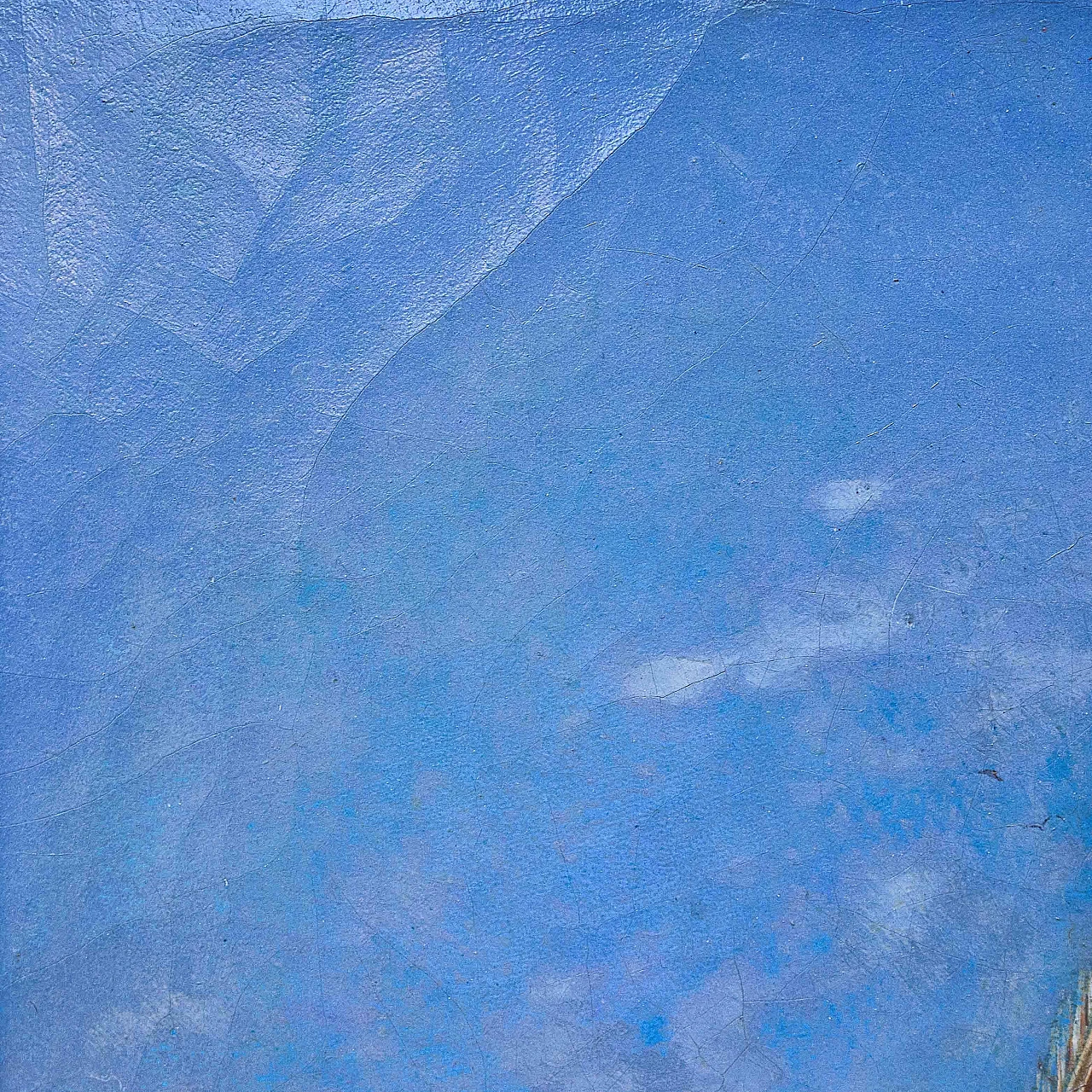
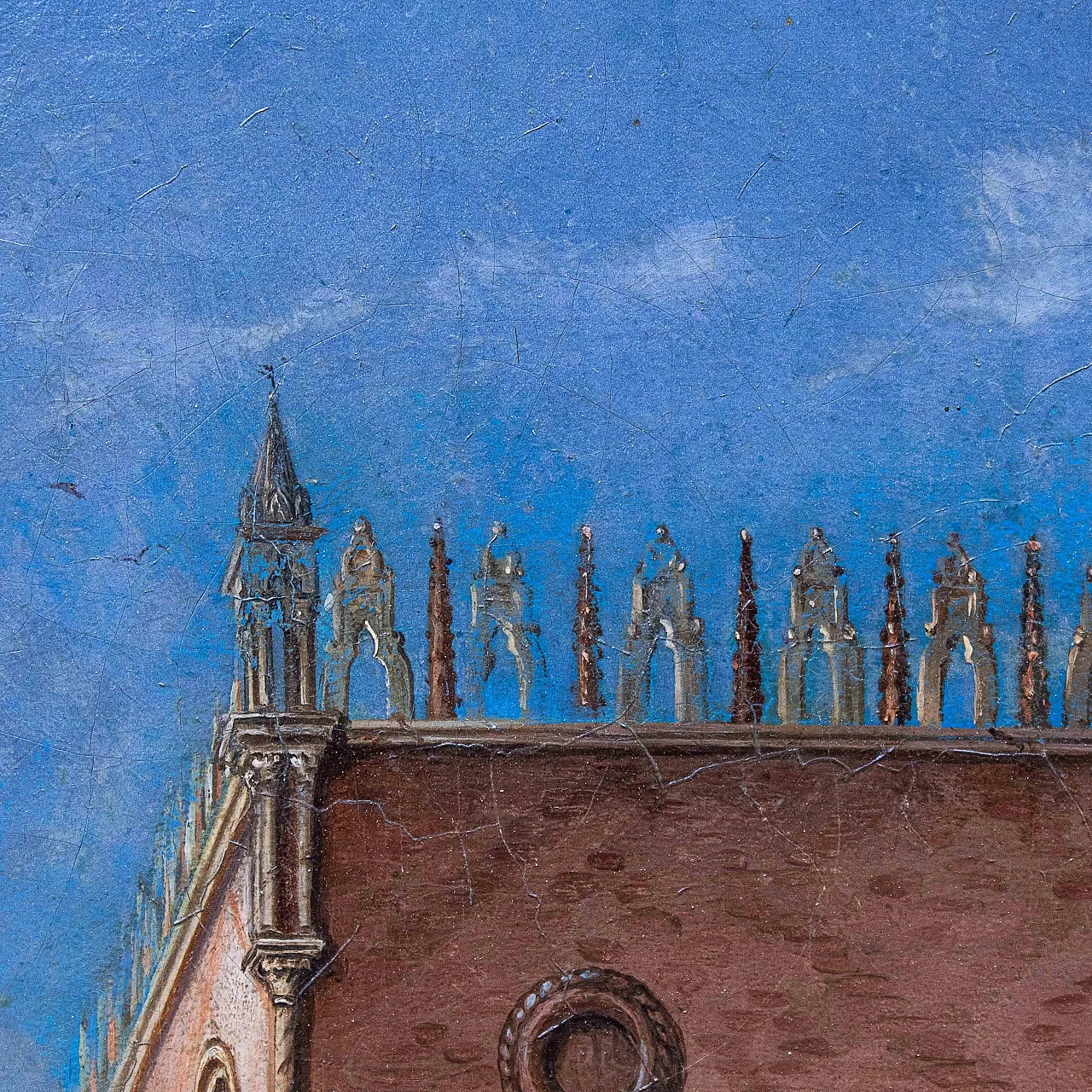
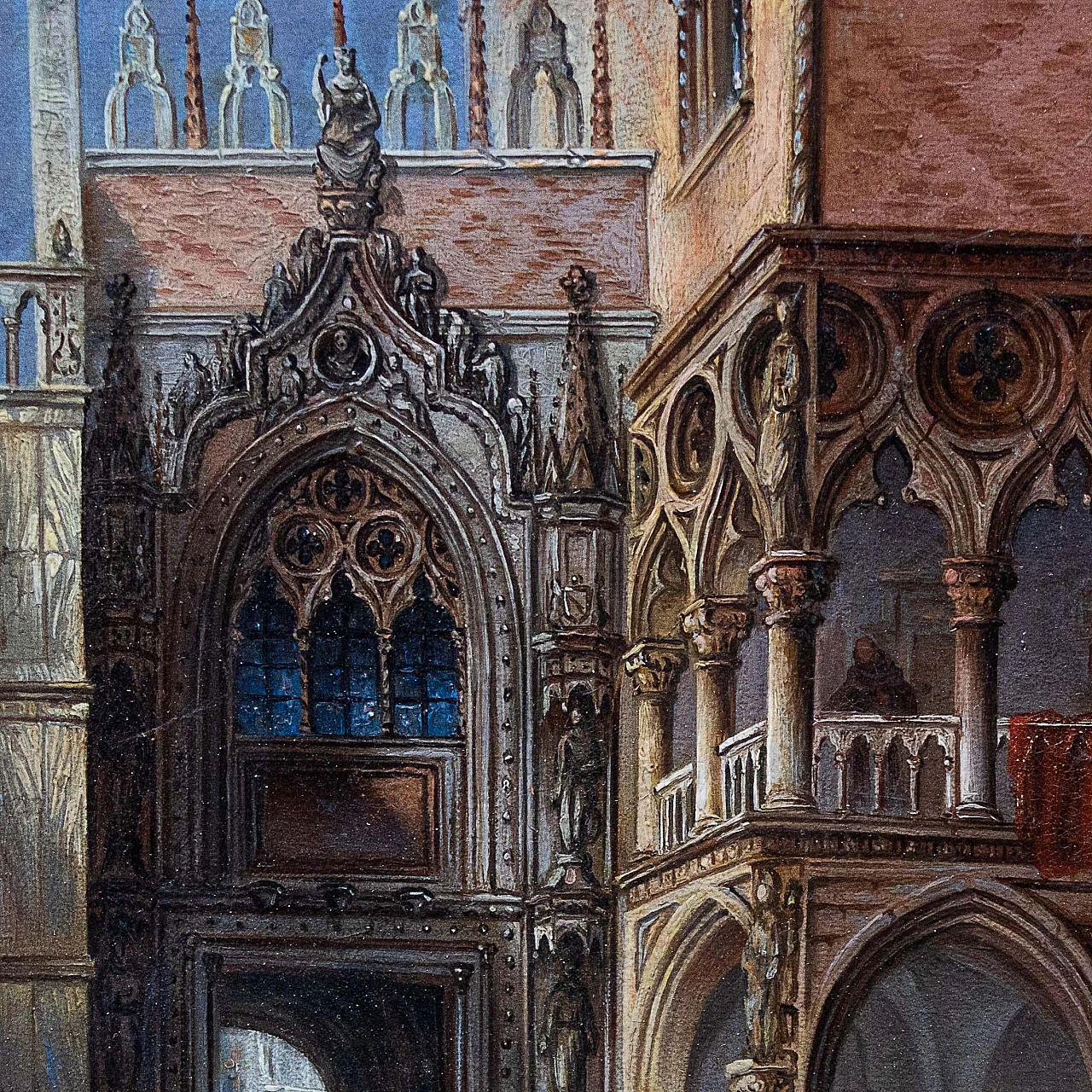
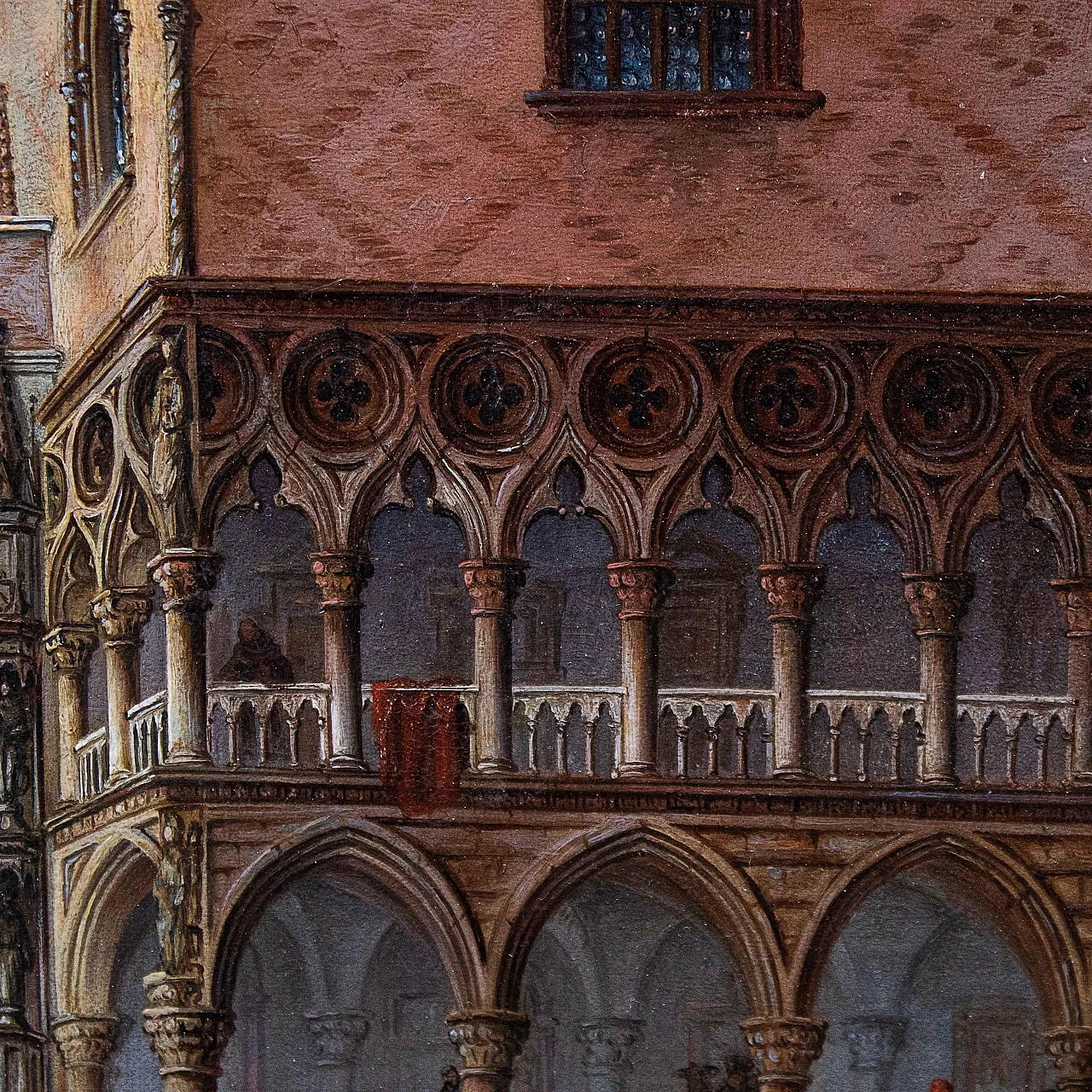
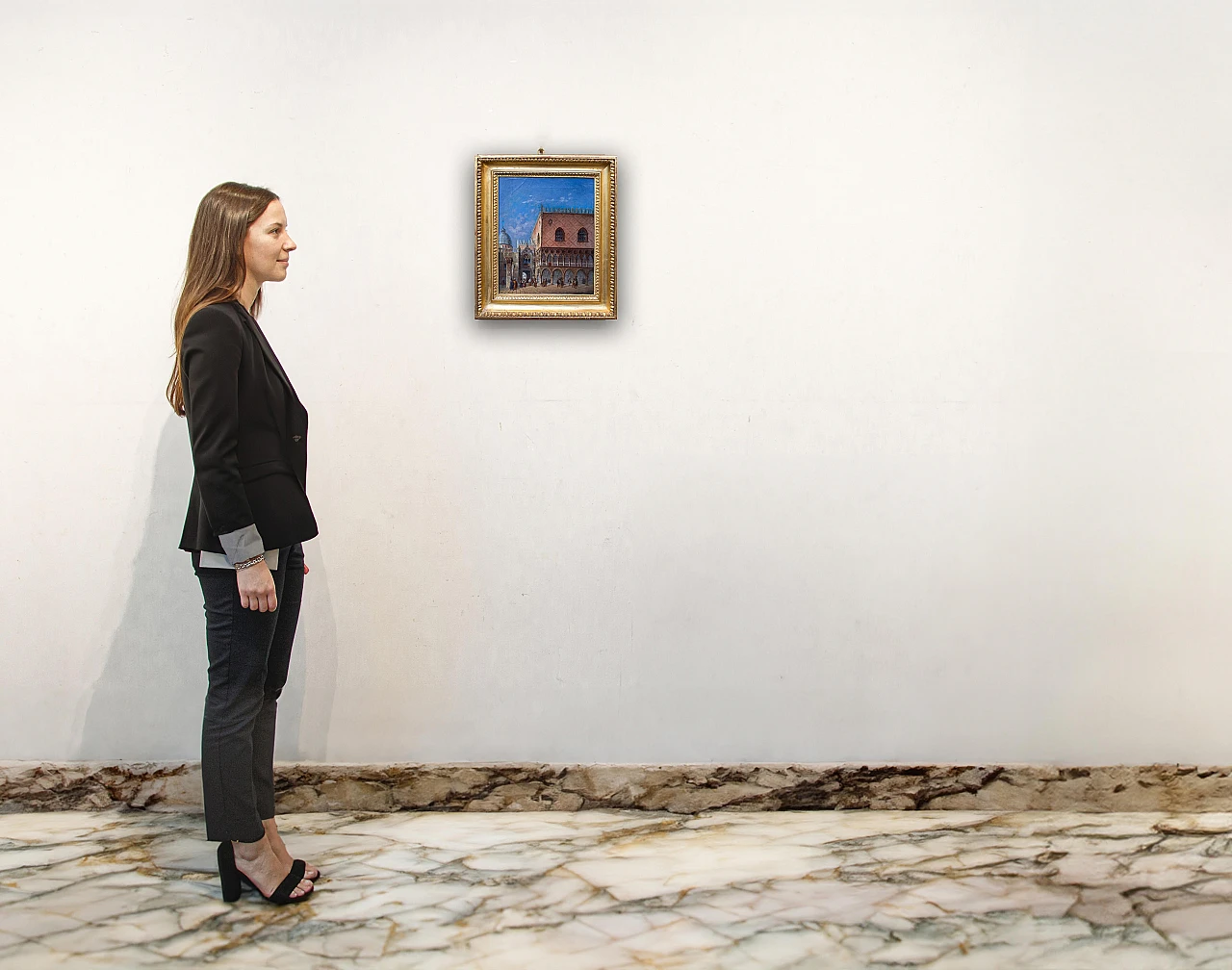
 SILVER Seller in Milano, Italia
SILVER Seller in Milano, Italia






.png)



